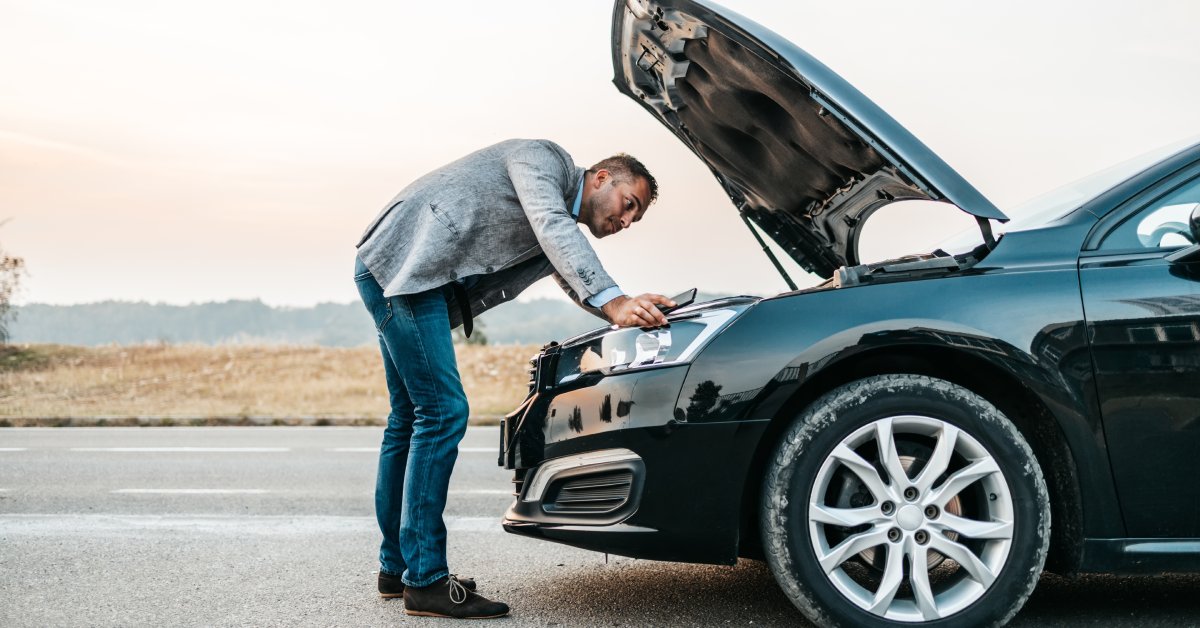- Former racer and longtime motorsports safety advocate is customizing his technology to better protect football players.
Many racing enthusiasts also just happen to be football fans, too. That’s the case with us here at E3 Spark Plugs. And it’s certainly the case for Motorsports Hall of Famer Bill Simpson, whose taking his post-racing life’s work from the track to the gridiron.
In 1958, an 18 year old Simpson, who would go on to race professionally from 1968 to 1977, broke both arms in a drag racing crash. He later recalled, “Until then, I was like most drivers. The only time I thought about safety was after I’d been hurt. This time, I was hurt bad enough to do a lot of thinking.”
That thinking led to Simpson’s first foray into developing motorsports safety solutions. He paid a visit to his uncle’s military surplus store for some advice, rented a sewing machine and got to work on the prototype for a cross-form parachute designed to slow down a drag car. Then, he enlisted a friend to test the idea. He attached the parachute to a tow hitch and tossed it off the back of Chevy wagon while his friend blew down the street at 100 miles per hour. Unfortunately, the chute was too big for the car and sent it airborne. The car crashed into a tree nursery and both teens were booked into the county jail. But the idea proved to have potential. So, when Simpson bonded out, he founded Simpson Drag Chutes and forever changed an industry.
In the years since, Simpson has developed a full range of racing safety products including specialized gloves, restraints, shoes and the first fire suit used in racing. So confident was in a later generation of fire suits that he demonstrated it by voluntarily being set on fire while wearing one in 1987. He also designed NASA’s first umbilical cords, used to provide communication, electrical and life support connections to astronauts, in 1967.
Now, Simpson is taking his passion for safety to the football field.
“I’d watched people got taken out on stretchers; that aspect largely went away from automobile races a long time ago,” Simpson told MotorSportsTalk in a recent interview about his research into using motorsports safety technology to better protect football players from head injuries. “I’d see these kids out there that couldn’t hold their heads up. It made me look into this whole deal. After I did some tests, we saw we could make huge improvements and bring (racing technology) to the athletic field.”
Several years of research, development and field testing later, Simpson has created an all-new helmet that he believes will lead to fewer incidents of football players being carted off the field with head, neck or brain injuries. According to Purdue University researchers, the new SG Helmets are 50 to 100 percent better at reducing forces reaching the head in the event of an impact than any other helmet they studied.
Made with carbon fiber and Kevlar composite, SG Helmets are half the weight, but offer twice the level of protection and impact absorption than do conventional polycarbonate shells. Multiple high school football programs in Central Indiana are using them, as have several NFL players. Former Colts and Green Bay Packers player Jeff Saturday switched and says he’s suffered no game-related headaches since.
Simpson believes his technology eventually will revolutionize the helmet industry, and to that end, is targeting the Little Leagues.
“I want to go after the 5-year-olds, so they don’t have a head injury that’s not repairable,” he told reporters.
We here at E3 Spark Plugs are, of course, racing fans. But we’re football fans, too. And many of us are parents, god parents, aunts and uncles of kids involved in sports. So, we commend Simpson on his dedication to safety.








